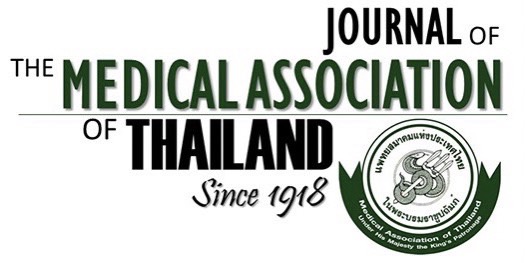Factors Associated with Compliance among Tuberculosis Patients in Thailand
Somrat Lertmaharit MSc, M Med Stat*, Pirom Kamol-Ratankul MD, MSc*, Holger Sawert MD, MPH**, Suksant Jittimanee MSc***, Sirinapa Wangmanee MSc***
Affiliation : * Faculty of Medicine, Chulalongkorn University ** WHO Office, Geneva, *** Tuberculosis Division, Ministry of Public Health
Background : Tuberculosis (TB) is a major health problem in developing countries. There are so many factors
which influence the cure rate and one of them is compliance. However, in developing countries like Thailand,
there is little information about the factors that can predict the compliance within TB patients.
Objectives : To study the level of compliance and associated factors among tuberculosis patients in Thailand.
Design : A cross-sectional descriptive study .
Setting : Three levels of health care facilities in the 4 regions of Thailand (Zonal TB Centers, Provincial
Hospitals and District Hospitals),excluding Bangkok.
Participants: A total of 487 adult newly diagnosed TB patients with positive sputum smear at the study
location and they were interviewed by trained health personnel with structured questionnaires.
Main Outcome Measures: Level of compliance classified into excellent (punctuality), good (missing < 2
consecutive weeks) and poor (missing > 2 consecutive weeks). The socio-economic variables were studied as
the independent variables.
Results : About 70% (342 out of 487)of the TB patients were males. Mean (SD) of age was 47.2(16.65) years
and ranged from 15 to 84 years. The excellent compliance rate of the TB patients was 65.7% (95%CI: 61.5-
69.6%) while good and poor compliance were 22.8% and 11.5%, respectively. Using Chi-square test of
association, the finding showed that the type of treatment (DOT and SS), gender, working, experience of
contacting TB patient, perception in health status, attitude, knowledge and social support were significantly
associated with the compliance (p < .05). Binary logistic regression (Excellent vs Good and Poor) were used
to adjust the confounding factors. Females were more likely to have excellent compliance than males
(Adjusted OR =1.87, 95% CI : 1.17-2.99, p=.009). Patients having perception of fair health status was 2.26
times more to have excellent compliance (95% CI : 1.45-3.53, p < .001).
Conclusion : Compliance is one of the potential factors to increase the cure rate in TB patients. Finding the
significant factors will pave the way to improve the effective treatment of tuberculosis.
Keywords : Compliance, Tuberculosis, Thailand



